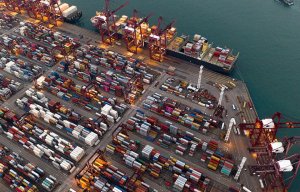
Euratex calls for EU consistency
If wrongly implemented, such an unprecedented wave of new measures could cause a complete collapse of the European textile value chain.

4th April 2022
Innovation in Textiles
|
Brussels
Euratex, the Brussels-based association representing the European textile and clothing industry, has welcomed the ambitions of the European Commission’s new EU Strategy for Sustainable and Circular Textiles announced on March 30th, but cautions that it raises many questions.
In a statement, the association notes that many European companies have already chosen to act on sustainable textiles and investments, in order to change how textiles are made, chosen and recovered, and the strategy should support them in this process – especially considering today’s energy crisis.
The strategy recognises the strategic importance of textiles and acknowledges European pro-active initiatives to tackle microplastics, to solve the challenges of market surveillance and to address the need for new skills. More cooperation is needed for the re-use and recycling of textiles and to set up an EU market for secondary raw materials. The Euratex ReHubs initiative is developing proposals to gauge the potential of EPR (extended producer responsibility) in order to transform waste into value, and create a new capacity and jobs.
Critical transition
Euratex observes that the EC’s proposed “transition pathways” – which will translate the strategy into action – will be critical.
It is seeking answers on how these sustainability targets will be reached, what the cost for SMEs will be and how companies can be supported in the green transition.
The Strategy for Sustainable and Circular Textiles is part of much broader package, including as many as 16 new legislative actions and other policies which will directly impact on the textile value chain.
In particular the Sustainable Product Initiative Regulation includes game-changing provisions on a Digital Product Passport, Eco-Design, SMEs and Green Public Procurement. The regulation has an overwhelming ambition and, to be realistic, it would require a new new way of jointly working between institutions and business, building on lessons learned on data flows across value chains, interoperability, conformity assessment and effective measures to support SMEs.
If wrongly implemented, such an unprecedented wave of new measures could cause a complete collapse of the European textile value chain under the burden of restrictions, requirements, costs and an unlevel playing field.
Barriers
In 2019, Euratex asked policy makers to work together and remove the barriers to the circular economy, solve the market surveillance paradox in which laws are made but not checked, and help create scale economies to make sustainable textiles affordable, and hence the norm.
With 28 billion products circulating annually in the EU, Euratex has also been stressing the need for enhanced market surveillance. It is actively working on solutions for a fair and effective market surveillance of textile products through its Reach4Textiles initiative.
Euratex also welcomes the establishment of the Digital Product Passport. It has a high potential to improve every step in the textile value chain, from design and manufacturing to recycling and purchasing. At the same time, the organisation is asking the co-legislators to take into account the role of SMEs in this transition and to put forward pragmatic initiatives for supporting them.
“Euratex calls for true cooperation with all policy makers and other stakeholders across the value chains to advise, pressure-test and use this opportunity for a successful transition,” said Alberto Paccanelli, Euratex president. “Our ambition must be to reconcile sustainability, resilience and competitiveness and we know it can be done.”

Business intelligence for the fibre, textiles and apparel industries: technologies, innovations, markets, investments, trade policy, sourcing, strategy...
Find out more